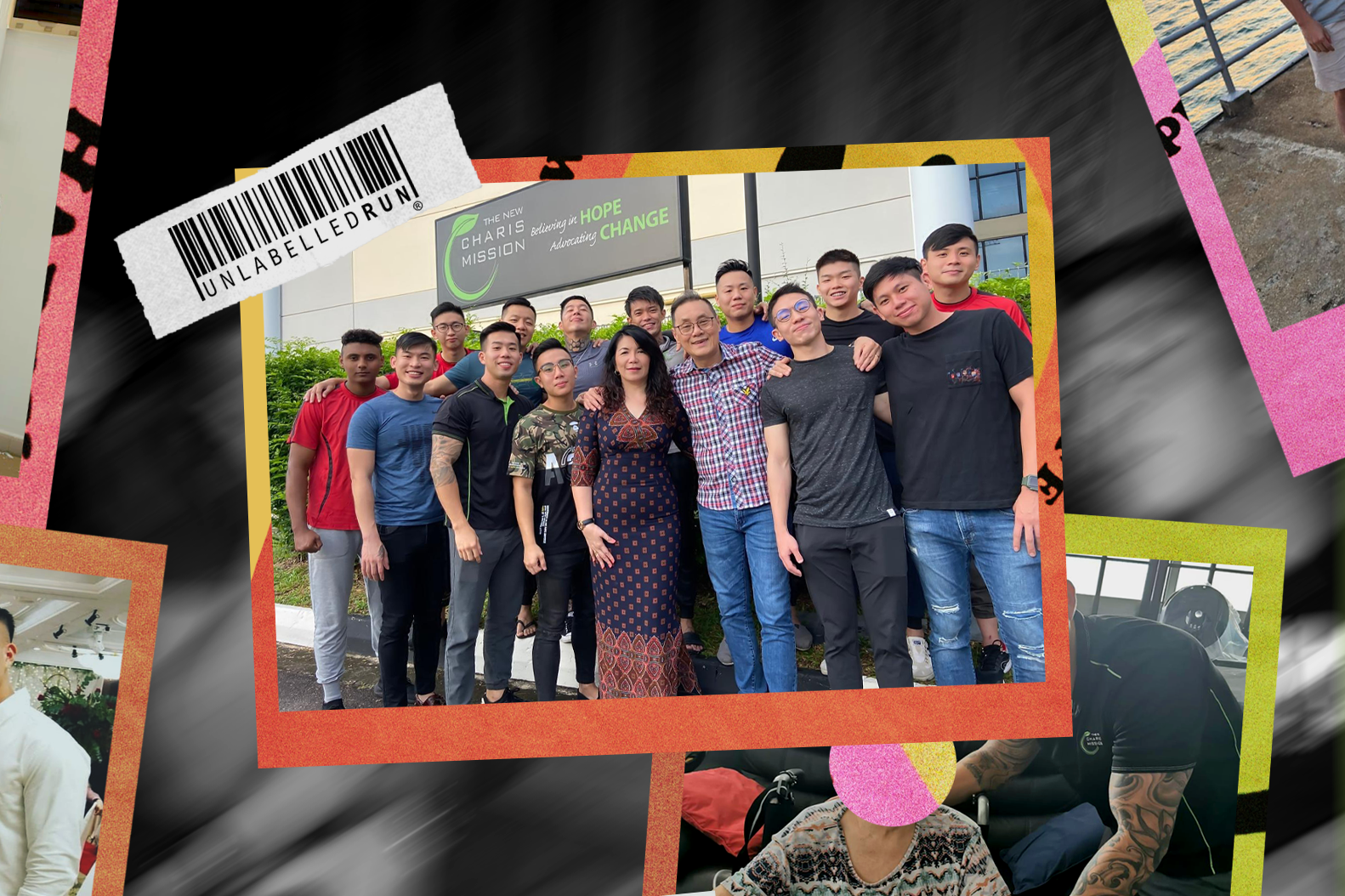I once thought that those who attempted to commit suicide were weak-willed and selfish individuals who had complete disregard of the love and concern of their loved ones and friends… But my stance was softened when I met her.
I work as a therapy assistant at a hospital in Singapore, and I was on my way back to my workplace on the sixth floor in the isolation wards, clutching my notebook in my hand, when my therapist messaged me to check on the two patients who were notorious for their daily refusals to do any exercise.
I was intent on taking my time, dreading the tedious process of donning the apron and gloves before I entered the room only to remove and dispose of them 2 minutes later after hearing their typical reply: “Tomorrow, lah.”

But that was when I saw her at the corner of my eye.
Shoulder length hair – blond at the tips. Black shirt with green accents. School shirt. Two phones and a portable charger. Both legs over the ledge. Barefoot. All this information flashed across my mind in a matter of microseconds.
It’s amazing how fast the brain takes in information, processes it and forms a story. I remember the very first thought that I had was: “You saw what she was wearing. You are going to regret it when she appears in the papers.” To this day, I have no idea how I made that immediate connection between her precarious stance and suicide.
I am not a hero. I didn’t rush toward her without hesitation. Believe me when I say that I must have taken a few steps after first noticing her – before deciding to turn back. The CCTV at the end of the hallway must have captured this and I am afraid to review the footage.
If anyone saw the CCTV footage, they would see my moment of cowardice where I spun around, hesitant, before turning back to her.
“You saw what she was wearing. You are going to regret it when she appears in the papers.”
Between us were three vertical panels of windows, and I remember very clearly that all three panels were locked.
In my mind, I had already formulated a two-step plan by the time I opened the top window: I was going to knock gently on the window pane, and ask her how she was doing (in case she was just relaxing).
But I did not do any of that.
Instead, what I did next shocked me to the point that I felt it surprised her. I unlocked the window pane and told her bluntly, “Miss, don’t do it.” I didn’t know why I said it like that, but I just felt prompted to do so.
In the days after the incident, in conversations with people who wanted to listen to my story, I was told that what I said was actually the right thing to do given the situation.
If I had knocked, she would have been alarmed enough to fall or jump. It was clear from the way she was sitting that she was intending to commit suicide.
I cannot remember how much time passed in the moment, but I remember that she flinched in a very unsettling manner, followed by a wail the likes of which I had never heard before. That was the moment I realised I had just stopped someone from jumping off a building.
As my body tried to catch up with what was happening in front of my eyes, I reached out to unlock another window pane, putting one leg inside as I tried desperately to figure out my next plan of action.
These actions prompted a warning from her: “Don’t come in. Can you go away please.”
By this time, a crowd had formed below us.
“Miss, don’t do it.”
As time seemed to come to a standstill, I felt a hand tap me on the shoulder.
I turned around to see a face say, “You go in, I grab from behind.” He made it sound so simple, but the way he said it and the assurance in his tone prompted immediate compliance. So I climbed through the window and onto the parapet without any hesitation.
There is no logical reason why she didn’t see me. Climbing through the window required me to bend down, put one leg through the opening, bring the other leg over, stand up and walk about 2 metres to where she was. It was only by God’s grace that she didn’t see us coming – He shielded her eyes.
As we executed our plan, there was the biggest sound of silence as she fell towards us – to safety. We had done it.
That experience on the parapet dramatically changed the way I view mental illnesses.
I used to view mental illness as a state that could be easily snapped out of, as if the solution was simply a quick change of perspective: There are always other people who are in worse circumstances, if they could choose not to end their life, why can’t you?
And I am guilty of quantifying a person’s suffering too, where I compare his pain with the extreme end of the “suffering spectrum”. This incident has taught me to be more sensitive to people with suicidal thoughts and to understand that life’s circumstances cannot be comparatively quantified.
I have also learnt how to be more delicate in my approach towards empathy. Everyone has their own emotional threshold shaped by personal experiences throughout their lives. There’s no one-size-fits-all approach in caring for an individual’s emotional wellbeing. And one’s family network is so important, it’s a strong safety net for a suicidal individual to find help in.
Suicide never removes or solves a problem – it just creates more problems. If you are going through suicidal thoughts, my prayer for you is that you will find someone to talk to and journey with you.
Don’t ever think that your situation is too far gone.
If you’d like to speak to someone, help is available at the following centres:
Samaritans of Singapore (SOS) 24-hour Hotline: 1800 221 4444 or [email protected].
Institute of Mental Health’s 24-hour Hotline: 6389 2222
Care Corner Counselling Centre (Mandarin): 1800 353 5800
Singapore Association for Mental Health: 1800 283 7019
And if you know someone who is at immediate risk, do reach out to emergency medical services.
- What are your views on mental illness?
- Do you know anyone who is struggling with emotional/mental well-being? How can you exercise more compassion today?
- Are there any struggles that you’ve been carrying alone? Who can you share it with?









